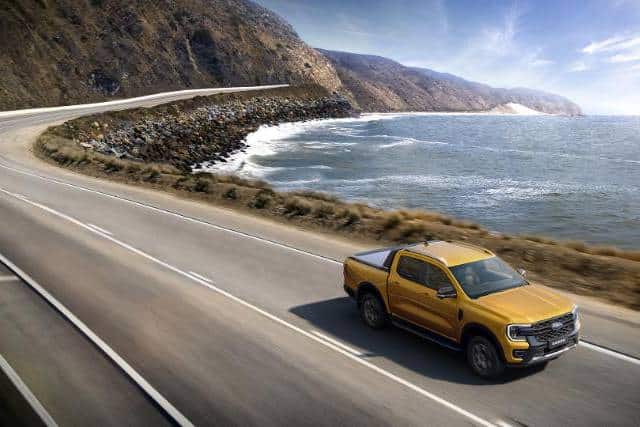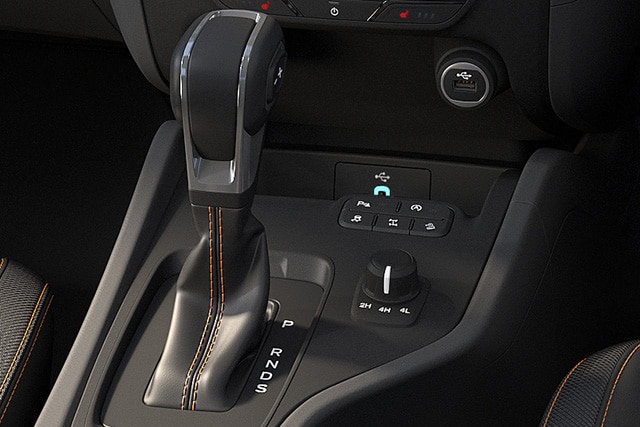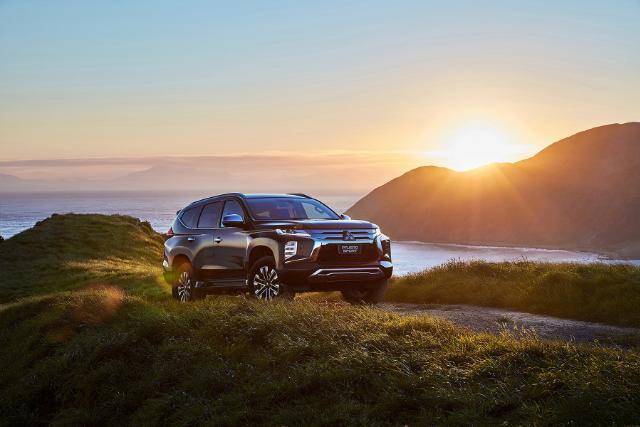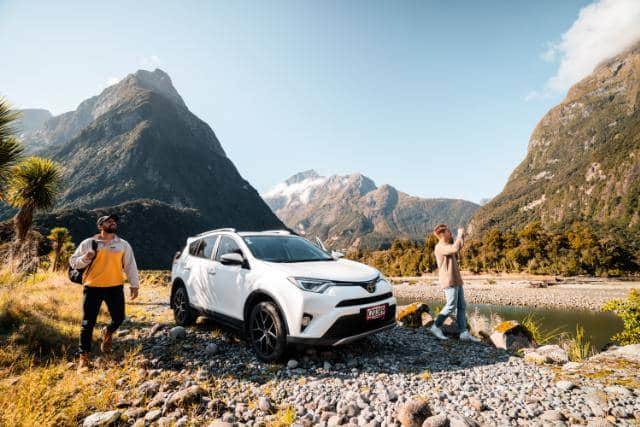They say the best paths are the ones least travelled. New Zealand – with its variety of beautiful off-road trails – is a country that’s just waiting to be explored by the adventurous! But if you’ve never driven a 4-wheel drive (4WD), it’s easy for those paths to feel inaccessible to you.
In this guide, we’ll get you GOing with everything you need to know about driving a 4WD so that you can feel equipped (and excited!) to take on your off-road Kiwi adventure!
Key Points We’ll Cover:
-
- What is an All Wheel Drive (AWD)?
- 2WD vs 4WD vs AWD?
- How to engage 4WD mode in your car,
- The importance of adjusting your tyre pressure in your 4WD for different scenarios
- The different tracks you may encounter in your 4WD
- The best off-road tracks in New Zealand
- Where you can’t go in New Zealand in your 4WD
- Safety tips for operating your 4WD
- Equipment to pack in your 4WD
- Rules of the 4WD road
- – What not to do in your 4WD
- Maintaining your 4WD
- – Engaging your 4WD regularly
- – Checking your tyres every few months
What is an AWD?
An All-Wheel Drive (AWD) is a vehicle system (a “drivetrain”) that transfers power from the engine to all four of the vehicle’s wheels. This enables the vehicle to move with enhanced traction and stability, particularly in slippery conditions.
2WD vs 4WD vs AWD
So what’s the difference between an AWD, 2WD and 4WD anyway? We break it down for you below:
| Feature | AWD | 2WD | 4WD |
| Drivetrain | Automatically distributes power from engine to all wheels.
Full-time system, meaning all wheels are powered at all times. |
Distributes power from engine to two wheels (either the front or rear wheels) | Can switch between 2WD and 4WD, often with high and low ranges.
Manual engagement needed for 4WD mode, intended for rougher terrain Allows for greater traction and stability with steering control. |
| Ideal use | On-road
Light off-road |
On-road
City driving |
Off-roading
Bitumen driving |
| Fuel efficiency | Moderate | Most efficient | Less efficient |
On top of this, 4WD’s generally sit higher off the ground so that you can clear bigger obstacles without worrying about damaging the bottom of your car. Similarly, they’re fitted out with bigger wheels and special tyres with a different kind of grip pattern that’s been specifically designed for off-road usage.
How to engage the 4WD in your car
4WDs have a drivetrain (a vehicle system) that allows them to switch between 2WD and 4WD modes (high or low).
Engaging the 4WD modes in your car is a manual process and which mode you engage will depend on the terrain you’re entering into on your drive.
As every 4WD has slightly different settings, always double-check your owner’s manual before a trip to get familiar with yours! Generally, if you’re hiring a 4WD, your rental 4WD will be in the standard operating gear (2WD mode) when you pick it up. This is the typical operating gear for driving on regular, dry, paved or sealed roads.
High-range 4WD (H4)
High 4WD mode (H4) should be saved for higher-speed driving on off-road tracks that may be icy, snowy, muddy or cracked. H4 will let you drive fast, but not so fast that you lose control, as it gives you more traction in these conditions.
To engage H4, you’ll need to stop the vehicle. Then, put the gear in neutral, turn the dial to H4 and wait until the gear is engaged. Usually, a 4WD symbol will light up on the dashboard to indicate that you’re now in the mode. Once you’ve engaged H4 safely, you can begin driving again.
It’s important to note that using H4 on regular, dry paved or sealed roads could actually cause premature wear and tear and damage to the vehicle, so aim to only engage it in off-road conditions.
Low-range 4WD (L4)
Low-range 4WD (L4) mode should be engaged in off-road situations that require maximum traction and control at lower speeds.
For example, you’d want to engage L4 before climbing or descending steep un-sealed hills, manouvering through soft sand and dunes, wavering through New Zealand’s muddy tracks or snow, or simply for driving over rocky terrain and water crossings.
Similarly to H4, in order to engage L4, you’ll need to stop the vehicle and put the gear in neutral. Then, push the dial in and turn it to L4. Wait until the gear is engaged – usually by the “4LO” symbol appearing on the dash – before driving again. Just like H4, you only want to engage L4 in these conditions. Using it on dry, paved roads will lead to damaged tyres.
The importance of adjusting the tyre pressure in your 4WD
Along with the different modes, adjusting the tyre pressure in your 4WD can be the difference between being stuck in the sand (metaphorically and literally) and cruising through it.
Depending on the terrain and type of road you’re driving on, you’ll want to adjust your tyre pressure accordingly. Measured in PSI (Pounds per Square Inch), you’ll need a tyre pressure gauge and compressor to help release and pump air into your tyres.
Generally, soft environments (like sand) will merit lower pressures, while harder environments (like rocky terrain) require higher pressures. Just don’t forget to pump up your tyres again when you’re back on paved roads!
The different tracks for 4WDs
To help you wrap your head around which terrains require what kind of tyre pressure, we round up some of the most common terrains you’ll find on your adventures around New Zealand. Learning to navigate these will get you GOing in your 4WD with confidence!
Forrest Tracks / Mud
New Zealand’s native forests often have rugged, muddy tracks that are ideal for 4WD adventures. But without the tools to adjust your tyre pressure, this could be more of a challenge than a charm.
For proper mud 4-wheel driving, you’ll want to let some air out of your tyres to give your tyres a larger surface area and more grip on the road beneath you. A PSI of over 20 will be what you want to aim for.
For especially slippery mud, make sure your 4WD’s traction systems are switched on and drive slow through the mud. When driving up or down those muddy forest hills, low (gear) and slow (speed) is the way to go.
Beach driving / Sand
While New Zealand’s sandy shores may be a huge attraction, sand can be tricky for 4WDs because of the way it compresses and falls under the weight of your vehicle.
Letting air out of your tyres can help improve the grip of your tyres over the sand. You’ll want a PSI around 18 and to keep your foot on the accelerator if you feel your car slowing.
If in the worst-case scenario, you get stuck, don’t panic. Rather than spinning your wheels in the same spot and digging a deeper hole for yourself, gently reverse out of the spot you’re stuck in. If you’re still stuck after doing this, release a little more pressure from your tyres and try again.
Because sand can be difficult to navigate, we recommend always going with a convoy of mates, bringing along recovery boards and packing a shovel in case you need to dig yourself out!
Please note that as per the terms of your rental, GO Rentals vehicles cannot be driven on beaches or on sand.
Water crossings / Rocks
Splashing through water crossings may look fun, but the depth of water can be deceptive.
It’s a great idea to have a passenger walk through the crossing first before driving through it to get a gauge of how deep and rocky it might be, as well as how quickly the water is flowing. Then, drive through slowly and steadily.
The tyre pressure you want for water crossings depends on the terrain. Most of the time, you’ll want to maintain a PSI of 25-30. This will help balance traction with protecting your tyres.
If the riverbed is rockier, or there’s deep tree roots to get over, this is when you’ll need a higher tyre pressure (around 28-31 PSI) to prevent punctures. Conversely, if the tracks are muddy or sandy, you’ll want to let some air out (to around 20-25 PSI) around your entry and exit points.
Mountains / Ice
One of the best off-road tracks for 4WD’s in New Zealand are the mountain tracks. These can include steep ascents and descents, rocky terrain, and sometimes snow and ice in alpine areas. Be prepared to adjust your tyre pressure as the conditions change.
For example, if your mountain track is particularly rocky, you’ll want to lower your tyre pressure as we’ve discussed to help absorb some of the impact and improve traction. But for gravel sections, slightly higher pressures (around 26-30 PSI) would be more appropriate. The same goes for icy sections. When coming into muddy areas however, you might need to drop this down again to 18-22 PSI.
The best off-road tracks in NZ
Now that we’ve covered the common terrain you can expect to see in your travels around New Zealand, it’s time for us to point you towards the must-visit tracks!
- Huntsbury Track: This Christchurch track offers stunning views of the city as well as Lyttelton Harbour and is a must-see!
- Rainbow Station: Rainbow Station is found in the Wairau Valley, and is a perfect stopover if you’re planning on heading to Hanmer Springs. It’s a 112 km track that rewards travellers with challenging terrain and breathtaking vistas.
- Porika Road: One of the most beautiful 4WD tracks in the country, explore the Nelson Lakes National Park on Porika Road. It offers exciting terrain and a series of stunning lookouts to enjoy.
Where can’t I go with a 4WD?
While 4-wheel driving opens up countless off-road trails, there are restrictions to where you can take a rental 4WD in New Zealand, including:
- Ball Hut Road (Mt Cook)
- Skippers Road (Queenstown)
- Ninety Mile Beach (Northland)
- Te Paki Stream Bed
- The road to Macetown near Queenstown
- Any track or thoroughfare including gravel roads that is not officially designated a road, including any beach
As these tracks may be too dangerous for the public.
Safety tips for operating a 4WD
Along with adjusting your tyre pressure and being mindful of the different conditions you’ll encounter on your 4-wheel drive, there are a few safety tips we’d recommend for those operating a 4WD. These include:
- Keeping your thumbs pointing in on the steering wheel whilst driving. This may sound like a strange one, but rough terrain can cause the steering wheel to rotate sharply without warning, causing strain and injury.
- Feed the seatbelt under rather than over your right shoulder to give you more mobility to turn and see what’s out of the driver’s side window.
- Always tell people where you’re going.
- Check the weather and if roads are open.
- If your 4WD is a hybrid transmission, read up on how to drive a hybrid car.
- Take a fully stocked first aid kit.
- Research your route, know your limits and be familiar with New Zealand roads. More difficult tracks take time and experience to maneuver.
- Bring a satellite phone as reception can be patchy.
- Keep to the left-hand side of the road.
Equipment to pack in your 4WD
It’s helpful to have a boot prepared with some safety equipment to give you peace of mind. Some of the best safety equipment to pack are:
- Recovery boards or getting out of sand
- Long-handed shovel for if you get bogged
- Spare tyre
- Tyre pressure gauge to check your pressure
- Compressor to pump your tyres back up when returning to bitumen
- Tyre deflator
- Tow straps
- A winch or snatch straps
- Snow chains if driving in winter
- Spare water shoes for wading through wet/muddy terrain
What not to do in a 4WD
While being higher off the ground might give you a sense of confidence, we round up some of our top tips for what not to do in a 4WD, including:
- Overtaking other vehicles: You might think no one else is driving on the other side of the road and try to overtake the car in front of you, but sharp, windy corners can be blindspots. Never overtake a vehicle on a narrow path.
- Rely on a 4WD’s brake system: many new 4WD drivers believe that the traction 4WD mode offers helps with braking stability, and unfortunately, this overconfidence can lead to more accidents. Never rely on 4WD mode to brake for you.
- Accelerate out of trouble: As mentioned, if you find yourself in a sticky situation, reverse out of it instead of accelerating.
- Engage 4WD mode on flat, smooth, dry or paved roads: Engaging 4WD mode when it’s not needed can cause premature wear and tear and damage to your tyres.
Maintaining your 4WD
Maintaining your 4WD regularly helps to keep it in the best shape and gives you the safest experience.
Engage your 4WD regularly
One of the most important things you need to do is to engage 4WD mode every few months to stop the system from deteriorating. Linkage and hub components may seize, seals dry out and lube drains off the gear. Engaging it every few months on wet pavement can prevent this.
Check tyres every few months
Tyres are prone to the usual wear and tear of driving, but as they carry more weight, perform more braking and turn your vehicle, your front tyres will often burn out at a faster rate than your back. Try rotating your tyres every 10km or so as a general rule of thumb.
Luckily, car rental companies like GO Rentals will do this heavy lifting for you. GO Rentals maintains their vehicles to a high standard so that you can GO with confidence.
Be confident with how to drive an automatic car as all of our vehicles have an auto transmission for ease on the New Zealand roads.
Get GOing on your 4WD off-road adventure today!
Whether you’re an adrenaline junkie keen to explore the wild and rugged terrain New Zealand offers, or simply a professional or parent looking for some extra space for work gear, luggage or the kid’s toys, 4WDs can open up a whole new world!
With unlimited kms, basic insurance cover and one-way rentals, GO Rentals has everything you need for your next Kiwi adventure. Pick up from our car rentals in New Zealand and explore to your heart’s content without worrying about having to get back to the start.
With a range of 4WD cars for rent, you can put the pedal to the metal and ‘off-road’ your holiday
Book a vehicle for this trip
We recommend:
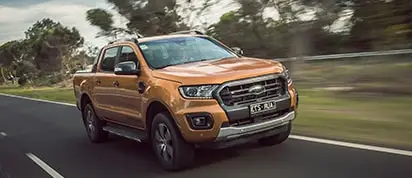
Premium Pickup 4×4
Ford Wildtrak 4×4
- Seats
- 5 seats
- Large Bags
- 6
- Small Bags
- 4
- Transmission
- Auto trans

